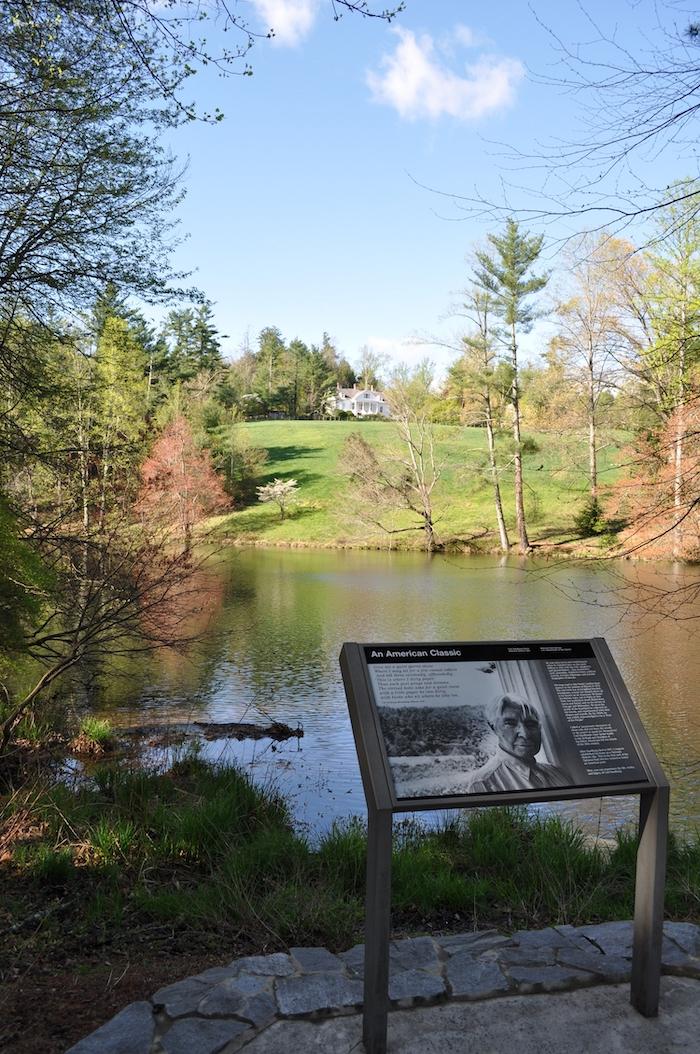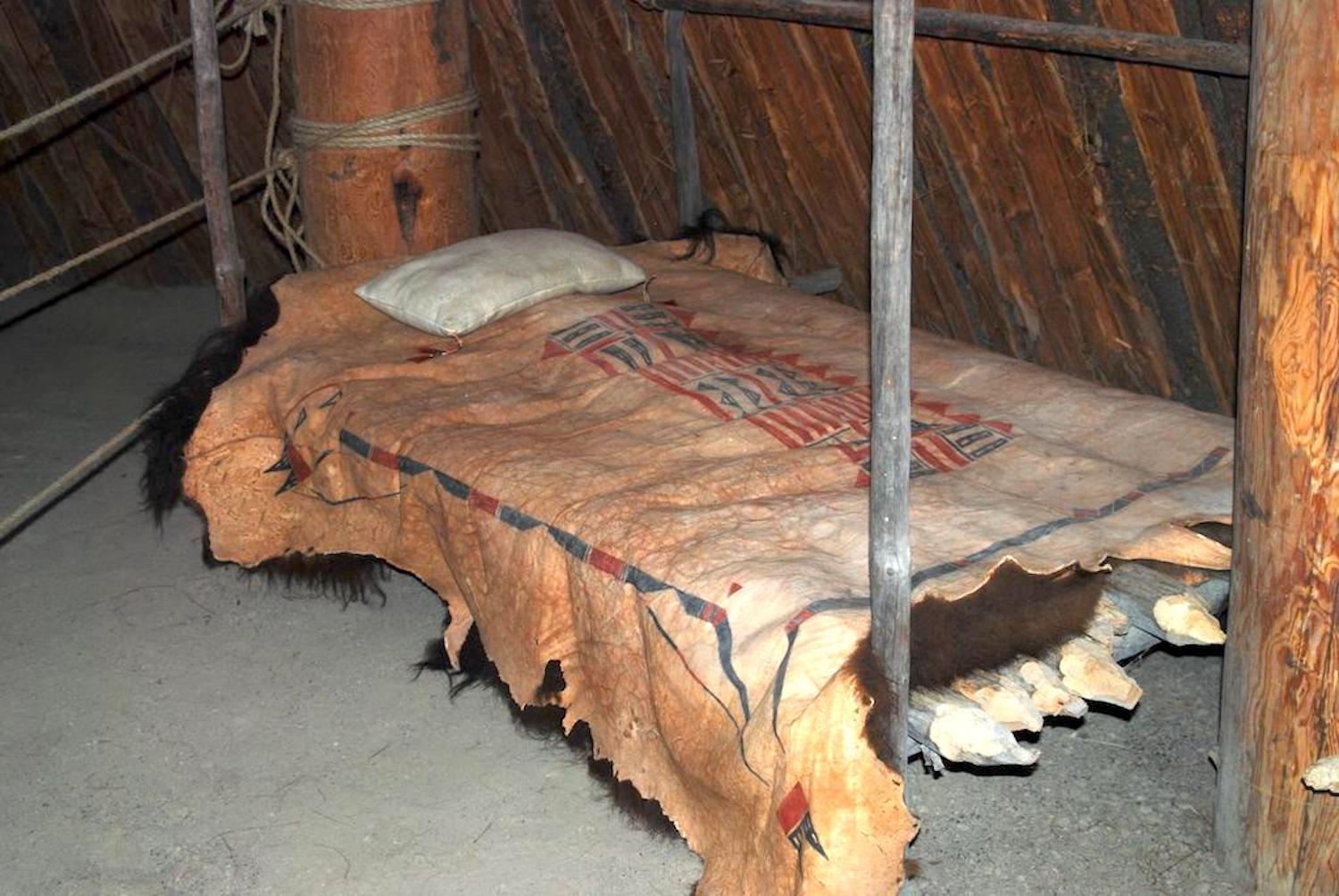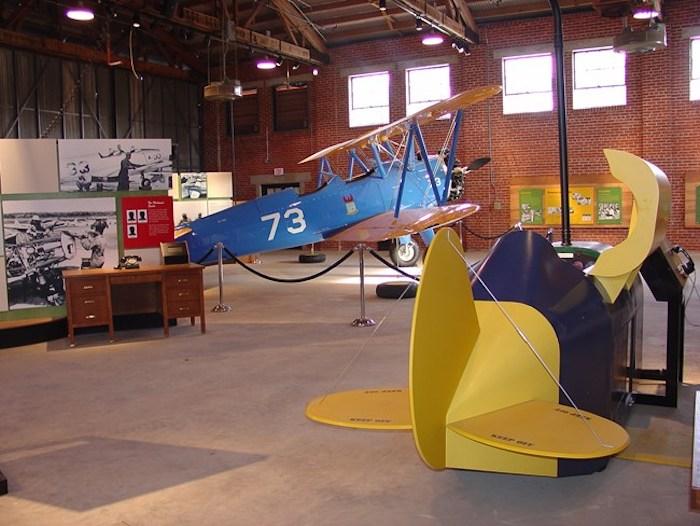Exploring The Parks: 10 Historic Sites To Visit This Fall
By NPT Staff
A chill is in the air, leaves are changing, and people are looking towards the holidays. Autumn also is the perfect time of year to soak in some of the country's history along with the fall colors at historic sites and historical parks in the National Park System. Check out the list below to get started.
Cumberland Gap National Historical Park, Kentucky-Tennessee-Virginia
In the late 1700s, Daniel Boone came through the Cumberland Gap and into the land that would eventually become the state of Kentucky.
Fall colors explode here in reds, oranges, and yellows. Foliage can best be viewed from a slow, winding, 4-mile drive from the visitor center to Pinnacle Overlook. From this vantage point – 2,440 feet high – visitors can look across Kentucky, Tennessee, and Virginia.
If you can't make a fall visit, consider one later in the year. The year-end holiday season is ushered in as Christmas-red cardinals decorate snow-covered hemlocks. Icicles become nature's diamonds frosting rocky mountainsides. The brisk air makes one's skin tingle. Christmas bells treat ears to a medley of jingles. And at Cumberland Gap National Historical Park's "Taste of Christmas Past" children of all ages thrill in the magic of mountain holidays of old.
“At Cumberland Gap, the first great gateway to the west, follow the buffalo, the Native American, the longhunter, the pioneer... all traveled this route through the mountains into the wilderness of Kentucky. Modern day explorers and travelers stand in awe at this great gateway and the many miles of trails and scenic features found in the park.” ~ NPS
Click here to learn more.

Hike through fall along the Loudoun Heights Trail at Harpers Ferry National Historical Park/NPS, Devin Taggart
Harper’s Ferry National Historical Park, West Virginia-Maryland
Harpers Ferry was part of the early republic breadbasket that fed the bigger cities with local grain and flour. Local flour production and bread on the table proved the town at the confluence of the Shenandoah and Potomac rivers was no longer the frontier, but civilized. The citizens no longer needed to hunt, kill, or gather to achieve each meal. At its height, 20,000 barrels of flour were staged along the Shenandoah River for shipping downriver.
By mid-century, in addition to a daily bread, most households over the course of a year consumed an array of baked goods made from hard and soft wheat, today’s equivalent of “all-purpose flour”: “34 loaves of bread, 17- 6 quart pans of doughnuts, 17 messes of biscuits, 94 pies, 7 loaf cakes, 1 ½ dozen tart crusts, 3 dozen gingersnaps, and one mess of pancakes.”
From strolling through the historic downtown to hiking in the beautiful woods nearby, Harper’s Ferry has activities for everyone. Beautiful fall foliage can be seen in town, as well as speckling the surrounding ridges.
Note: Fall is one of the busiest seasons for this park, and Maryland Heights is the most popular trail. Click here for other options.
“Find yourself at the confluence of history and nature. Experience a flash point that ignited the Civil War. Find your story in the struggle for freedom, education, and civil rights. Explore the rolling Blue Ridge mountains and rushing waters of the Shenandoah and Potomac rivers.” ~ NPS

Be sure to check out the lake at the Carl Sandburg Home/NPS
Click here to learn more.
Carl Sandburg Home National Historic Site, North Carolina
Carl Sandburg (1878-1967) was a Pulitzer Prize-winning poet and biographer as well as a lecturer, newspaper columnist, author of American fairytales, and folksinger. He was known as “the Poet of the People” and called “the great voice of the American industrial age” because he employed his unique free verse form of poetry and prose to champion the everyday working person and provide broad insight into the circumstances, worth and spirit of the American people during the 20th century. Most of his work was set in the context of the Midwest and urban America and dealt with the themes of bustling activity and can-do spirit.
Sandburg's home is protected by the National Park System for generations to come. Visitors can hike five miles of trails across the 264-acre property, as well as take tours of the home (though these are currently not running because of Covid-19). Check out the lake for some beautiful fall reflections.
“Carl Sandburg provided a popular voice for the American people of the twentieth century and still speaks to us through his words, activism, music and the beauty and serenity of Carl Sandburg Home National Historic Site.” ~ NPS
Knife River Indian Villages National Historic Site, North Dakota
Cottonwoods reach out over the Knife River, and there are green ash and willows. Beyond the banks, mixed-grass prairie runs, much like it did when Meriwether Lewis and Willam Clark arrived in the fall of 1804. When they reached here after having traveled roughly 1,600 miles up the Missouri River from St. Louis winter was in the air, and the explorers decided to build a fort here near the Indian villages and sit out the winter.
You can get a more realistic sense of the past by entering an earthlodge replica that was built in 1994 just behind the park's visitor center. Massive cottonwood trunks serve as the primary foundation, anchored deep in the earth and rising up from the lodge's center. Cottonwood limbs serve as beams that were interwoven with willow branches before the final layer of dirt was applied.
Entryways feature a small vestibule that includes a small fence of stout poles in front of which a bison skin is suspended to block cold air. A fire pit takes up the very middle of the lodge. Off to one side stands a small sweat lodge, while sleeping bunks covered with bison skins run along the walls. Small cache pits, perhaps 4 feet deep, were used to keep foods cool in the summer heat.

Bedding of skins and furs helped keep Native Americans warm through winter in their earthlodges at Knife River/Kurt Repanshek file
Explore the historic village sites along the river. What species do you see? The park wants to know! Download the iNaturalist app and catalogue the fall season’s plants and animals as you explore. Keep an eye out for migrating birds!
“Earthlodge people hunted bison and other game, but were in essence farmers living in villages along the Missouri and its tributaries. The site was a major Native American trade center for hundreds of years prior to becoming an important marketplace for fur traders after 1750.” ~ NP

Hangar 1 holds a flight simulator known as the Link Trainer, which was restored thanks to donations provided by The Friends of the Tuskegee Airmen NHS/NPS
Tuskegee Airmen National Historic Site, Alabama
When you think of fall, do you picture the color red? A crimson hue reminds us of the Tuskegee Airmen, the famous Red Tail pilots that fought for freedom during World War II. The pilots received their "Red Tail" nickname because they wore striped tails as they began their flight training in the Army's PT-17 Stearman bi-plane, according to the National Park Service. "The Tuskegee Airmen were not just pilots...They were technicians, radio operators, medical personnel, quartermasters, parachute riggers, mechanics, bombardiers, navigators, meteorologists, control tower operators, dispatchers, cooks, and others," the agency adds.
Check out the beautiful views at the site, as well as a superb museum – complete with the planes themselves – that showcases the experience of these pilots from training through deployment.
“The women of the "Tuskegee Experience" worked alongside male counterparts as mechanics, gate guards, control tower operators, aircraft fuselage technicians, secretaries, and clerks. There were three permanent female parachute riggers who were responsible for training hundreds of cadets in the correct procedures for packing and maintaining parachutes. ~ NPS
Click here to learn more.

Walk the colorful fall grounds of the Vanderbilt Mansion in New York State before, or after, touring the mansion/NPS, Bill Urbin
Vanderbilt Mansion National Historic Site, New York
By any standard, past or present, this property—with a magnificent view of the Hudson River and Catskill Mountains—would be considered prime real estate. A series of fine homes has stood on the tract since about 1764, and in 1847 the estate was called "one of the finest specimens of the modern style of Landscape Gardening in America."
Such superlatives attracted the attention of Frederick Vanderbilt, the grandson of Cornelius “Commodore” Vanderbilt, who had built a fortune from shipping, ferries and the New York Central Railroad. One of Frederick's brothers, George Washington Vanderbilt, is perhaps best-known for his Biltmore estate near Ashville, NC. Collectively, the Vanderbilts were known as both the richest—and the most powerful—family in America in the late 1800s.
Take in the unique colors of fall, framing the impressing Vanderbilt Mansion, from the Vanderbilt Riverfront Trail, Bard Rock picnic area, as well as the formal gardens.
“Built by of one of the first families of wealth in America. Designed by one of the nation's preeminent architects. The Vanderbilt Mansion is a home built expressly for the aristocratic lifestyle.” ~ NPS
Click here to learn more.

Spanish moss drapes the trees at Barataria Preserve/NPS
Jean Lafitte National Historic Site, Louisiana
This just might be the only national park named after a pirate. Lafitte also was a slave trader. But his aid to the U.S. government during the War of 1812 against Britain cast him as a patriot, not a pirate, and in some eyes a swashbuckling patriot at that.
U.S. Senator J. Bennett Johnston, a Democrat from Louisiana, was somewhat of a patron saint to Jean Lafitte National Historical Park. Johnston in 1976 introduced the legislation to create the park, and when he chaired the Senate subcommittee on national parks and served as floor manager of the Interior Department's appropriations bill he saw that the park was properly funded.
Do we recommend the trails of Jean Lafitte and its Barataria preserve because of the fall foliage? No. In a hot and humid state, fall is the best time to enjoy these unique wetland ecosystems without high temperatures or mosquitoes! Make sure to look for alligators during your walk.
“In Jean Lafitte's day, silver and gold filled a pirate's treasure chest, but today's treasures are people, places, and memories. Discover New Orleans’ rich cultural mix. Learn Cajun traditions from people who live them. Watch an alligator bask on a bayou’s bank. Walk in the footsteps of the men who fought at 1815’s Battle of New Orleans.” ~ NPS
Click here to learn more.
Hopewell Culture National Historic Site, Ohio
Encompassing six earthwork complexes, the site protects these mounds and structures, surrounded by rolling grasslands. Hike through these sites or take a guided tour from a park ranger.
“Nearly 2000 years ago, American Indians built dozens of monumental mounds and earthen enclosures in southern Ohio. These earthwork complexes were ceremonial landscapes used for feasts, funerals, rituals, and rites of passage associated with an American Indian religious movement that swept over half the continent for almost 400 years.” ~NPS
First State Historical Park, Delaware
First State National Historical Park sits along the Delaware/Pennsylvania border in the Brandywine Valley—a place that represents the traditional homeland of the Lenni Lenape People and early American colonial history. The park also encompasses a bucolic landscape captured by Andrew Wyeth and a long tradition of artists and is rich in biodiversity.
The Brandywine portion of the park is one of six historic sites across both Delaware and Pennsylvania that tell the story of early settlement, and Delaware’s important role as the first state to ratify the Constitution. The Brandywine Valley is especially beautiful during the fall season. Explore 1,300 acres and take in streams, fields, and woodlands – all accessible through 23 miles of trails.
“Famous as the First State to ratify the Constitution, Delaware was born out of a conflict among three world powers for dominance of the Delaware Valley. From this beginning, the region developed a distinct character that tolerated diversity in religion and national origin and valued independence.” ~ NPS
Click here to learn more.

The blacksmiths at Grant-Kohrs can pound out an iron boot pick in seconds flat/Kurt Repanshek file
Grant-Kohrs Ranch National Historic Site, Montana
When the brutally cold and snowy winter of 1886-87 swept through the Rockies, it crippled many of the West's cattlemen. For Conrad Kohrs, however, his banker in nearby Butte, Montana, provided him with a $100,000 handshake loan that enabled him to rebuild the largest cattle empire the country has ever known.
The business deal was perhaps the shrewdest and most daring Conrad Kohrs executed, but it gave him the ability to restock his herds while other cattlemen -- some who lost 95 percent of their herds to that terrible winter -- went bankrupt. So successful was the move that the cattle baron paid the loan off in just four years.
The ranch retains a rich and fascinating collection of late-19th century cattle baron memorabilia. While the sprawling ranch house is a magnificent structure frozen in time from the heydays of the Kohrs empire, outbuildings that housed a blacksmith shop, bunkhouses for hired hands, ice storage, and stables tell stories of what many today view as a romantic chapter of Western history but which in truth reflect the harshness of cowboy life.
"Wide open spaces, the hard-working cowboy, his spirited cow pony, and vast herds of cattle are among the strongest symbols of the American West. Once the headquarters of a 10 million acre cattle empire, Grant-Kohrs Ranch National Historic Site preserves these symbols and commemorates the role of cattlemen in American history."~ NPS

 Support Essential Coverage of Essential Places
Support Essential Coverage of Essential Places